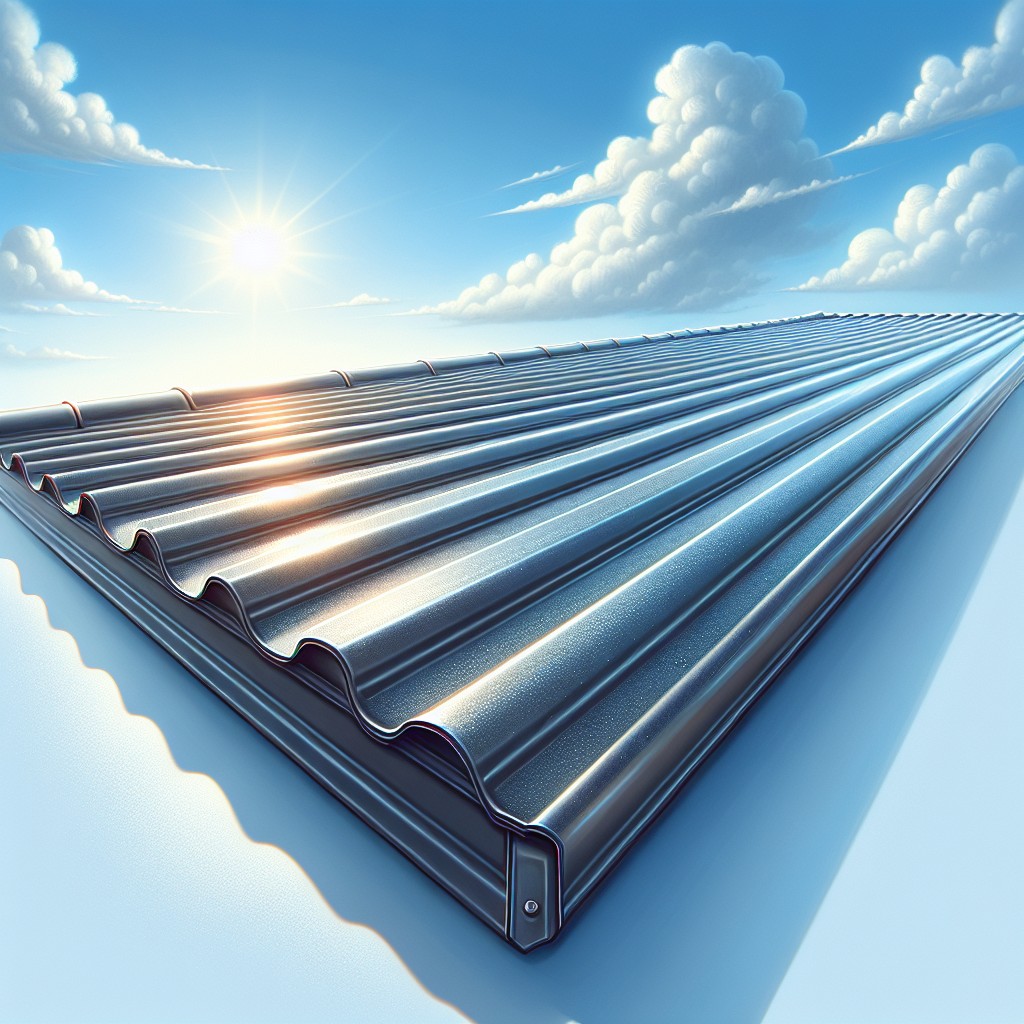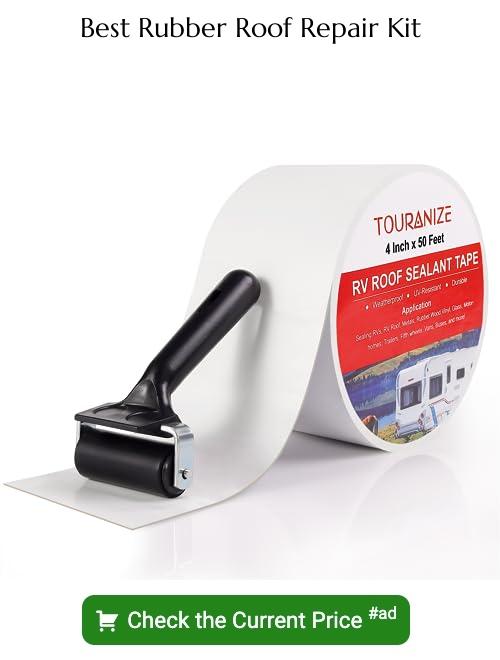Last updated on
In this article, you will receive detailed information about the longevity of rubber roofs.
Key takeaways:
- Rubber roofs last 30-50 years with proper installation and maintenance.
- EPDM rubber roofing typically lasts 30-50 years.
- Factors that affect rubber roof longevity include installation quality, maintenance, and climate.
- To prolong the life of a flat roof, keep it clean, inspect for damage, and address leaks promptly.
- Weather and environmental factors can impact the durability of rubber roofs.
Rubber Roof Lifespan

Rubber roofing, commonly used in flat or low-slope buildings, is a durable and cost-effective solution for many property owners. The expected lifespan of these roofs typically ranges from 30 to 50 years with proper installation and maintenance.
The longevity of rubber roofing can be attributed to its resilience against weathering, UV rays, and temperature extremes. Its material composition, primarily consisting of ethylene propylene diene monomer (EPDM) or sometimes thermoplastic olefin (TPO), adds to its robustness and ability to withstand environmental stressors.
Although installation quality significantly affects lifespan, most rubber roofs outlast conventional asphalt shingle roofs due to their inherent resistance to cracking, splitting, and rot. Regular inspections and addressing minor repairs swiftly also contribute to maximizing the life expectancy of these roofing systems.
How Long Does a Flat Membrane Roof Last?
The longevity of a flat membrane roof relies heavily on the type of material used, quality of installation, maintenance, and environmental conditions. Here are key points to consider:
1. Material Selection: EPDM (rubber), PVC, and TPO are common flat roofing materials. They vary in durability; for instance, EPDM usually lasts between 30 and 50 years, while PVC and TPO have life expectancies of about 20 to 30 years.
2. Installation Quality: Proper installation by experienced professionals is crucial for maximizing the roof’s lifespan. Incorrectly installed roofs may fail prematurely due to leaks or material degradation.
3. Maintenance Regime: Regular inspection and maintenance can extend the life expectancy of a flat membrane roof significantly. Addressing minor issues like seam repairs or punctures can prevent more extensive damage.
4. Environmental Exposure: The roof’s location can affect its durability. Sunlight, temperature fluctuations, and harsh weather conditions can all shorten a roof membrane’s service life, demanding more frequent inspections and maintenance.
By understanding these factors, property owners can make informed decisions about their flat membrane roofs and take proactive measures to ensure their longevity.
How Do You Prolong the Life of a Flat Roof?
Regular maintenance is key to maximizing the lifespan of any flat roof. It is recommended that inspections be conducted twice a year, ideally during spring and fall, to pre-empt potential issues.
Here are actionable steps to prolong your flat roof’s life:
- Keep the roof clean: Remove debris, leaves, and dirt that can retain moisture and cause membrane deterioration.
- Inspect and repair seams: Examine the edges and seams of the roofing for signs of wear or damage and promptly address any issues.
- Check for ponding water: Ensure proper drainage to prevent water accumulation, which can weaken the roof structure and membrane over time.
- Trim overhanging tree branches: This reduces the deposit of leaves and prevents physical damage from falling limbs.
- Address leaks quickly: Water infiltration can cause significant damage, so immediate repair is crucial.
- Mind rooftop equipment: Periodically inspect and maintain mounted equipment to prevent damage to the roofing material.
- Hire professionals for maintenance: For thorough inspections and complex repairs, relying on experienced roofing contractors is advisable.
By following these steps, you preserve the integrity of your flat roof and avoid premature replacement costs.
What Is the Lifespan of EPDM Rubber Roofing?
Ethylene Propylene Diene Monomer (EPDM) roofing, commonly known as rubber roofing, typically offers a service life of 30 to 50 years. Several factors contribute to this range in longevity:
- Installation Quality: Professional, high-quality installation ensures proper seam attachment and flashing placement, crucial for maximizing the lifespan.
- Roof Slope and Drainage: Slight slopes are conducive to effective drainage, thereby preventing water pooling that can accelerate wear and tear.
- Maintenance: Regular inspections and timely repairs, such as sealing leaks and removing debris, can prolong the roof’s life.
- Material Thickness: EPDM membranes come in various thicknesses, generally ranging from 45 to 90 mils—the thicker the membrane, the longer it can withstand environmental factors before replacement is needed.
- UV Exposure: Although EPDM is inherently resistant to UV radiation, prolonged exposure can still cause the material to deteriorate over time without proper protective coatings.
- Local Climate: Extreme temperatures, storm frequency, and hail can impact durability. EPDM performs well in different climates, but areas with severe weather may reduce its lifespan.
These points highlight the need for consideration of external and human factors that influence the longevity of EPDM rubber roofing.
How Climate and Environmental Factors Impact Rubber Membrane Durability
Climate and environmental factors play a significant role in the longevity of rubber membrane roofs. Temperature fluctuations can cause the membrane to expand and contract, potentially leading to cracks over time. In scorching climates, prolonged exposure to UV rays may accelerate the degradation of the material, while in colder regions, snow and ice accumulation can inflict mechanical stress and damage.
Areas with high winds are also a concern, as they can create uplift pressures that test the membrane’s fastening system and might lead to tears if not properly installed or maintained. Additionally, regions prone to hail can see physical impacts that compromise the membrane’s integrity.
Pollution and exposure to chemicals in industrial areas can also affect the roof’s lifespan by breaking down the rubber compounds more quickly. Even trees surrounding the building can have an effect by depositing debris and oils, which may lead to increased maintenance to prevent damage.
Proper installation and regular maintenance, including cleaning and inspections, are essential to mitigate these environmental impacts and ensure the longest possible life for a rubber roof.
FAQ
How often should a rubber roof be replaced?
A rubber roof should typically be replaced every 25 to 35 years, though extreme weather conditions might necessitate earlier replacement.
What are the disadvantages of a rubber roof?
The primary disadvantages of a rubber roof include susceptibility to shrinkage and cracking due to weather exposure, especially in drier climates, which can lead to leakage issues over time.
Do rubber roofs need maintenance?
Yes, rubber roofs do require maintenance, though they are generally low maintenance, and cleaning them occasionally with dish soap and water can help prolong their lifespan.
Can you walk on rubber roof?
Yes, one can walk on a rubber (EPDM) roof, however, it’s only designed to accommodate light foot traffic during installation, occasional cleaning, or maintenance.
What factors influence the longevity of a rubber roof?
The longevity of a rubber roof is influenced by factors such as the quality of installation, the climate and weather conditions, maintenance frequency, and the material’s UV resistance.
How does weather affect the durability of a rubber roof?
Extreme weather conditions, such as intense sunlight, heavy rain, hailstorms, and strong winds, can degrade a rubber roof’s resilience, potentially causing cracks, leaks, and overall accelerated wear.
Is it possible to extend the life span of a rubber roof through certain treatments or procedures?
Yes, the lifespan of a rubber roof can be extended through regular cleanings, timely repairs, and coatings specifically designed for rubber roofs.
Related
- Commercial Roof Replacement: A Comprehensive Guide
- How Long Does TPO Roof Last: An Informative Guide on the Lifespan of TPO Roofing
- How to Reseal RV Roof: A Step-by-Step Guide for Efficient Roof Maintenance
- How Long Does a Shingle Roof Last? An Examination of Lifespan and Durability Factors
- Flat Roof: Everything You Need to Know

